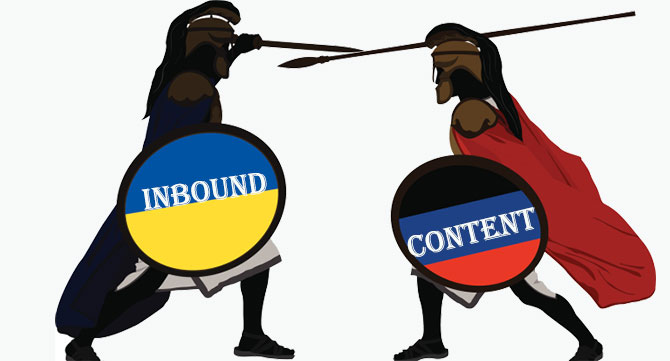Inbound Marketing vs Content Marketing
In a business environment where traditional outbound marketing programs are losing traction, both inbound and content marketing programs are moving to the forefront in rapid fashion. While both of these types of marketing got started in the early to mid 2000s, it has only been within the last 4-5 years that these programs have risen in prominence as viable marketing programs. This is especially true for businesses trying to build a significant presence online.
Before any comparison between these two marketing programs can be made, it should be noted that many people use these terms interchangeably. To clarify, the lines between these two are somewhat blurred, often prompting much debate between experts. It’s quite possible that one would be irrelevant without the presence of the other. That said, there are some subtle differences worth discussing.
What is Inbound Marketing?
The primary focus of an inbound marketing program is the product and the sales cycle process from the generation of live quality leads to the closing of sales. Inbound marketing creates these leads by driving customers to the company’s website and/or products by using content that explains the product(s) and targets the customer’s specific needs. This product specific content is usually delivered using search engine optimization (SEO), email marketing programs and lead generation techniques. Notice the use of the word “content” within the description. There is also a portion of a typical content marketing program that does focus on the virtues of the product, however subtle it might be. In this context, content marketing becomes a subset of the inbound marketing program and provides a means to an end where the sale is the goal.

What is Content Marketing?
By comparison, content marketing focuses on attracting and retaining customers for the benefit of the company. Some might even use the term “value-added” advertising. Regardless of what it’s called, the goal of content marketing is to educate readers witout asking for anthing in return. There are a variety of different tools that can be used spread the word in a content marketing program. These tools include infographics, videos, news stories, social media, ebooks, blogs, photos and how-to-guides. Each of these tools are designed to make information customers want and need to determine whether or not they want to become a customer available. This is an important part of relationship building between customers/potential customers and the company. When viewed in a broader sense, this process is also referred to as building a brand.
The Debate
There are plenty of professional marketers who will fight tooth-and-nail to convince anyone who will listen that these two types of marketing are basically the same. On the other side of the debate are just as many marketers who believe the differences are relevant. In order to identify how each program differs it might prove worthwhile to reiterate a couple of the key differences described above.
Attraction – Inbound marketing is used to attract customers to the products being offered and directing them to the website. This is crucial because high website traffic usually translates to higher sales. With content marketing, the content is used to attract the customer to the company.
Time Sensitivity – An inbound marketing program is looking for immediate results. The product is presented to potential customers in such a way to motivate them to take action and visit the company’s website with a potential sale. Content marketing derives its value by cultivating relationships between customers and the company, which is a time-consuming process.
It might be an acceptable practice to use these two terms interchangeably. As pointed out is the text above, the differences are subtle. The most important reason to recognize the differences is to enable the company’s marketing staff to understand what the company is trying to achieve and which type of marketing is best suited to deliver the expected results.










